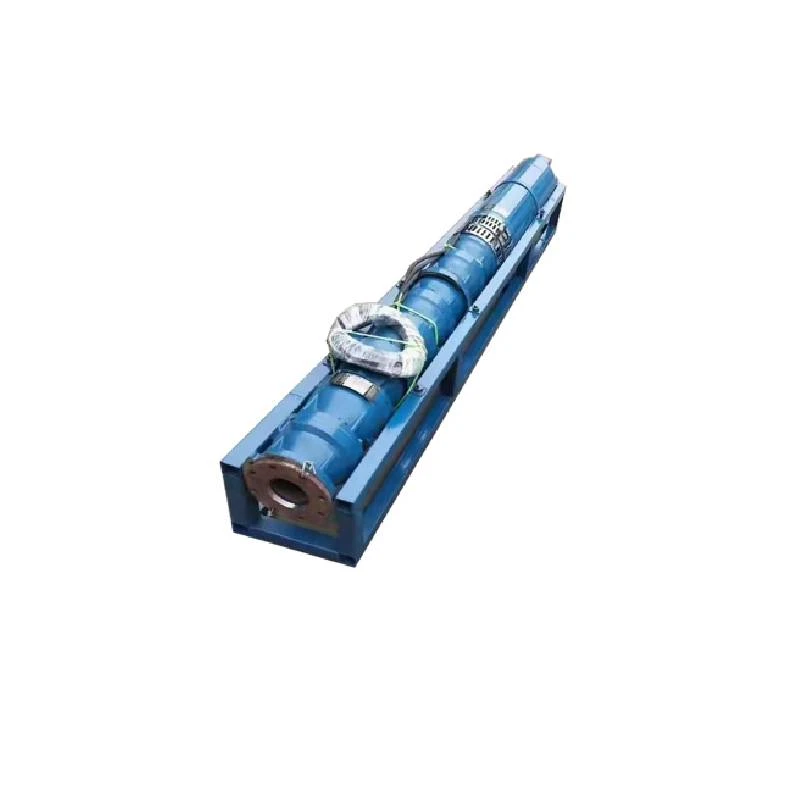Dec . 15, 2024 17:53 Back to list
how does a deep well submersible pump work
How Does a Deep Well Submersible Pump Work?
Deep well submersible pumps are essential devices used in various applications, from agricultural irrigation to municipal water supply systems. Understanding how these pumps work can help users select the appropriate model for their needs and troubleshoot common issues.
Basic Components
A deep well submersible pump typically comprises several key components the pump itself, a motor, a discharge head, and piping. The pump and motor are housed together in a cylindrical casing that is designed to operate underwater, often at depths exceeding 300 feet, which is why they are termed submersible.
The motor is located at the lower end of the unit and is sealed to prevent water ingress, while the pump is positioned above it. The discharge head, installed above the well, allows the water to flow from the pump to the surface through piping.
How It Operates
The operation of a deep well submersible pump begins with the motor. When electricity is supplied to the motor, it generates rotational energy. This energy is transmitted to the impellers of the pump.
The impellers are designed to increase the velocity of the water as it enters the pump. As water enters through the intake screen at the base, it is drawn into the impeller. The rotation creates centrifugal force, pushing the water outward towards the pump casing.
Water Displacement Process
As water is flung outward by the impellers, it moves through a series of stages in multi-stage pumps, each fitted with additional impellers and diffusers. Each stage further increases the water's pressure. The sequential stages allow for effective lifting of water from great depths, as each impeller adds kinetic energy, which is converted into pressure.
how does a deep well submersible pump work

Once the water reaches the top of the pump, it exits through the discharge pipe. The discharge head not only directs the flow of water into the piping system but also usually accommodates the electrical connections necessary to power the motor.
Advantages of Submersible Pumps
One of the main advantages of deep well submersible pumps is their ability to function at considerable depths. As conventional pumps rely on atmospheric pressure to push water upward, submersible pumps eliminate this limitation by being placed directly in the water. This allows them to effectively lift water from deep underground sources without reducing the flow rate significantly.
Additionally, submersible pumps reduce the risk of cavitation, a phenomenon where vapor bubbles form and collapse in a liquid, potentially damaging pump components. Since they are submerged, these pumps naturally maintain pressure and minimize the risk of cavitation.
Applications and Maintenance
Deep well submersible pumps are widely used in rural and urban settings alike. They are commonly employed for irrigation, supplying drinking water to homes, and in industrial applications. Their versatility and efficiency make them invaluable in meeting water supply demands.
Maintaining a submersible pump is crucial for its longevity and efficiency. Regular checks should include monitoring the electrical connections, inspecting for leaks, and ensuring that the pump is free from debris. If the pump fails to deliver water or shows signs of decreased performance, it may require professional assessment.
Conclusion
Understanding how a deep well submersible pump works can provide insights into its operation and functionality. These pumps are marvels of engineering, capable of lifting water from significant depths efficiently. Their effective design and operation contribute to a reliable water supply in various sectors, showcasing their importance in modern water management systems.
-
Submersible Water Pump: The Efficient 'Power Pioneer' of the Underwater World
NewsJul.01,2025
-
Submersible Pond Pump: The Hidden Guardian of Water Landscape Ecology
NewsJul.01,2025
-
Stainless Well Pump: A Reliable and Durable Pumping Main Force
NewsJul.01,2025
-
Stainless Steel Submersible Pump: An Efficient and Versatile Tool for Underwater Operations
NewsJul.01,2025
-
Deep Well Submersible Pump: An Efficient 'Sucker' of Groundwater Sources
NewsJul.01,2025
-
Deep Water Well Pump: An Efficient 'Sucker' of Groundwater Sources
NewsJul.01,2025
-
 Submersible Water Pump: The Efficient 'Power Pioneer' of the Underwater WorldIn the field of hydraulic equipment, the Submersible Water Pump has become the core equipment for underwater operations and water resource transportation due to its unique design and excellent performance.Detail
Submersible Water Pump: The Efficient 'Power Pioneer' of the Underwater WorldIn the field of hydraulic equipment, the Submersible Water Pump has become the core equipment for underwater operations and water resource transportation due to its unique design and excellent performance.Detail -
 Submersible Pond Pump: The Hidden Guardian of Water Landscape EcologyIn courtyard landscapes, ecological ponds, and even small-scale water conservancy projects, there is a silent yet indispensable equipment - the Submersible Pond Pump.Detail
Submersible Pond Pump: The Hidden Guardian of Water Landscape EcologyIn courtyard landscapes, ecological ponds, and even small-scale water conservancy projects, there is a silent yet indispensable equipment - the Submersible Pond Pump.Detail -
 Stainless Well Pump: A Reliable and Durable Pumping Main ForceIn the field of water resource transportation, Stainless Well Pump has become the core equipment for various pumping scenarios with its excellent performance and reliable quality.Detail
Stainless Well Pump: A Reliable and Durable Pumping Main ForceIn the field of water resource transportation, Stainless Well Pump has become the core equipment for various pumping scenarios with its excellent performance and reliable quality.Detail
